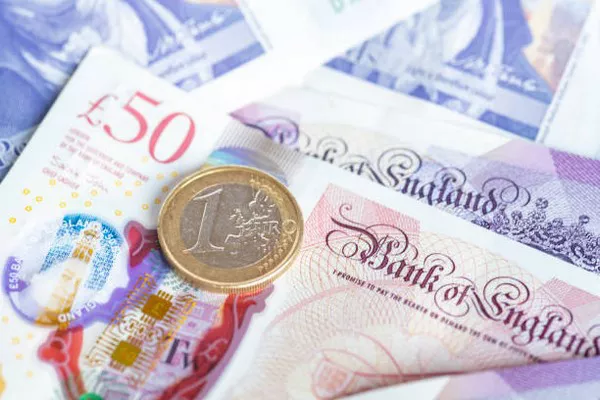In the world of international finance and trade, the strength of a currency like the British Pound (GBP) plays a crucial role in determining economic stability, export competitiveness, and investment attractiveness. For businesses, investors, and policymakers alike, understanding how to assess the strength of the pound is essential for making informed decisions. In this comprehensive guide, we will delve into the factors that influence the strength of the pound and explore the key indicators used to evaluate its strength.
Factors Affecting Currency Strength
Before delving into indicators, it’s important to understand the fundamental factors that impact the strength of a currency like the British Pound:
Interest Rates: Central banks, like the Bank of England (BoE), set interest rates that influence borrowing costs and, consequently, the value of a currency. Higher interest rates generally attract foreign investment, increasing demand for the currency and strengthening its value.
Economic Performance: Strong economic growth, low unemployment, and stable inflation typically signal a healthy economy, bolstering confidence in the currency and attracting foreign capital.
Political Stability: Political uncertainty can weaken a currency as it erodes investor confidence. Stable governance and political institutions are generally associated with a stronger currency.
Trade Balance: A country with a strong trade surplus (exports exceeding imports) tends to have a stronger currency due to higher demand for its goods and services, leading to increased demand for its currency.
Market Sentiment: Investor perceptions and market sentiment can also impact currency strength. Positive news or sentiment about a country’s economic prospects can lead to currency appreciation.
Key Indicators of Pound Strength
Now let’s explore the specific indicators that analysts and traders use to assess the strength of the British Pound:
1. Exchange Rates
The most straightforward indicator of currency strength is its exchange rate relative to other currencies. A strengthening pound will appreciate against other currencies, meaning it takes more of a foreign currency to buy one pound. Exchange rates are influenced by a myriad of factors, including interest rate differentials, economic data releases, geopolitical events, and market sentiment.
2. Interest Rates
The Bank of England’s monetary policy decisions, particularly changes in the benchmark interest rate, have a significant impact on the pound’s strength. Higher interest rates attract foreign capital seeking higher returns, increasing demand for the pound and driving up its value.
3. Economic Data
Key economic indicators, such as Gross Domestic Product (GDP) growth, employment figures, inflation rates, and retail sales, provide insights into the health of the UK economy. Positive economic data releases typically strengthen the pound, while disappointing data can lead to depreciation.
4. Inflation
Inflation erodes the purchasing power of a currency. Therefore, lower inflation rates relative to other countries can contribute to a stronger pound as it maintains its value better over time.
5. Trade Balance
The UK’s trade balance, which measures the difference between exports and imports, impacts currency strength. A trade surplus (more exports than imports) suggests a strong currency due to higher demand for the pound to pay for exports.
6. Political Stability
Political stability is vital for currency strength. Political uncertainty or instability can weaken the pound as investors seek safer havens.
7. Market Sentiment
Market sentiment and speculative positioning also influence currency strength. Positive sentiment towards the UK economy or global risk appetite can lead to a stronger pound.
8. Global Events and Geopolitics
Global events, such as Brexit negotiations or changes in international trade agreements, can have a profound impact on the pound’s strength by influencing investor perceptions and market sentiment.
Analyzing Pound Strength in Practice
To illustrate how these indicators are used in practice, consider the following scenario:
Scenario: The Bank of England announces an interest rate hike due to robust economic growth and rising inflation. Concurrently, UK GDP figures exceed expectations, indicating a strong economy. These developments lead to increased demand for the pound, causing it to appreciate against major currencies like the US Dollar and Euro.
Analyst Perspective: Analysts observing these developments would likely interpret them as bullish for the pound. They may anticipate further appreciation based on positive economic momentum and adjust their forecasts accordingly.
Challenges and Risks in Assessing Pound Strength
While these indicators provide valuable insights, assessing currency strength is not without challenges:
Volatility: Currency markets can be highly volatile, subject to sudden shifts due to geopolitical events or unexpected economic data releases.
Complex Interactions: Currency strength is influenced by multiple interrelated factors, making it challenging to isolate specific drivers.
Speculative Activity: Speculative trading and market sentiment can lead to short-term fluctuations that may not reflect underlying economic fundamentals.
Conclusion
Assessing the strength of the British Pound requires a nuanced understanding of economic, financial, and geopolitical factors. By monitoring key indicators such as exchange rates, interest rates, economic data, inflation, trade balance, and political stability, analysts and investors can gain valuable insights into currency trends and make informed decisions.
In today’s interconnected global economy, currency strength is not only a measure of economic health but also a critical determinant of investment flows and trade competitiveness. By staying abreast of relevant indicators and developments, stakeholders can navigate currency markets effectively and capitalize on opportunities arising from fluctuations in the value of the British Pound.


